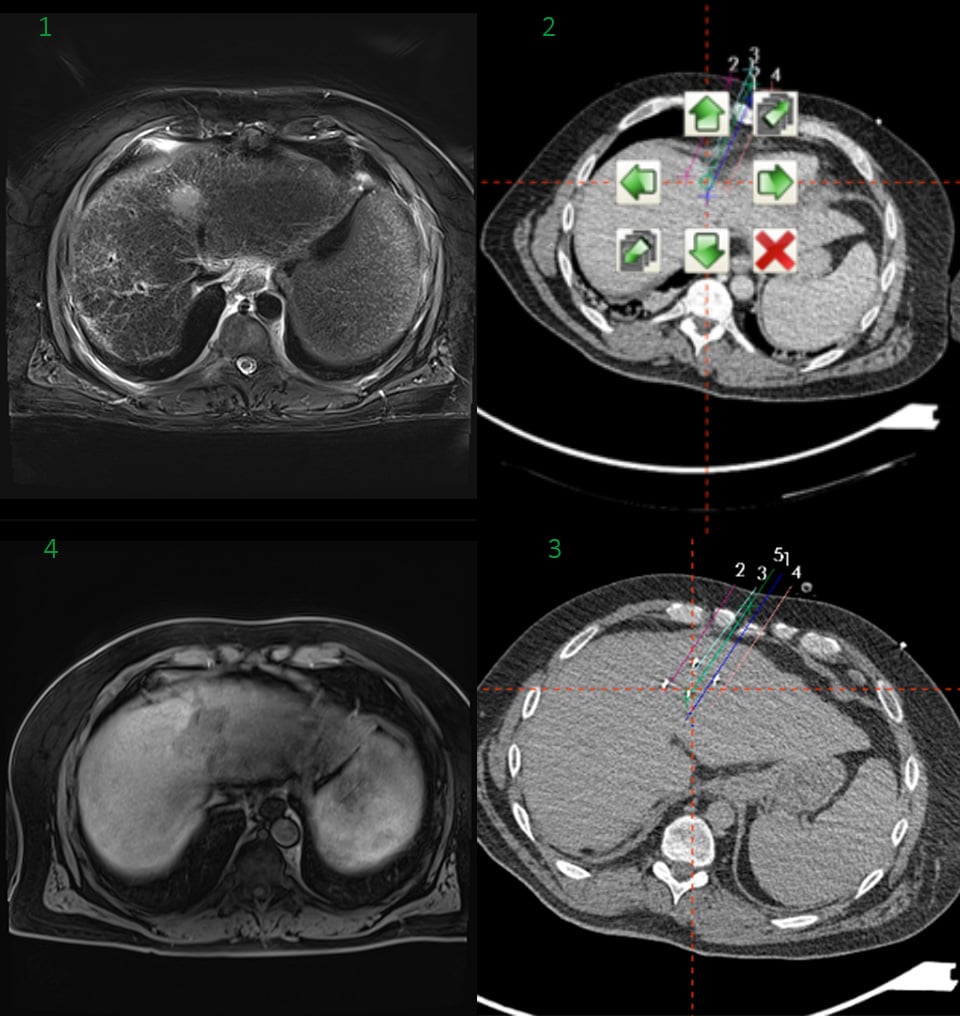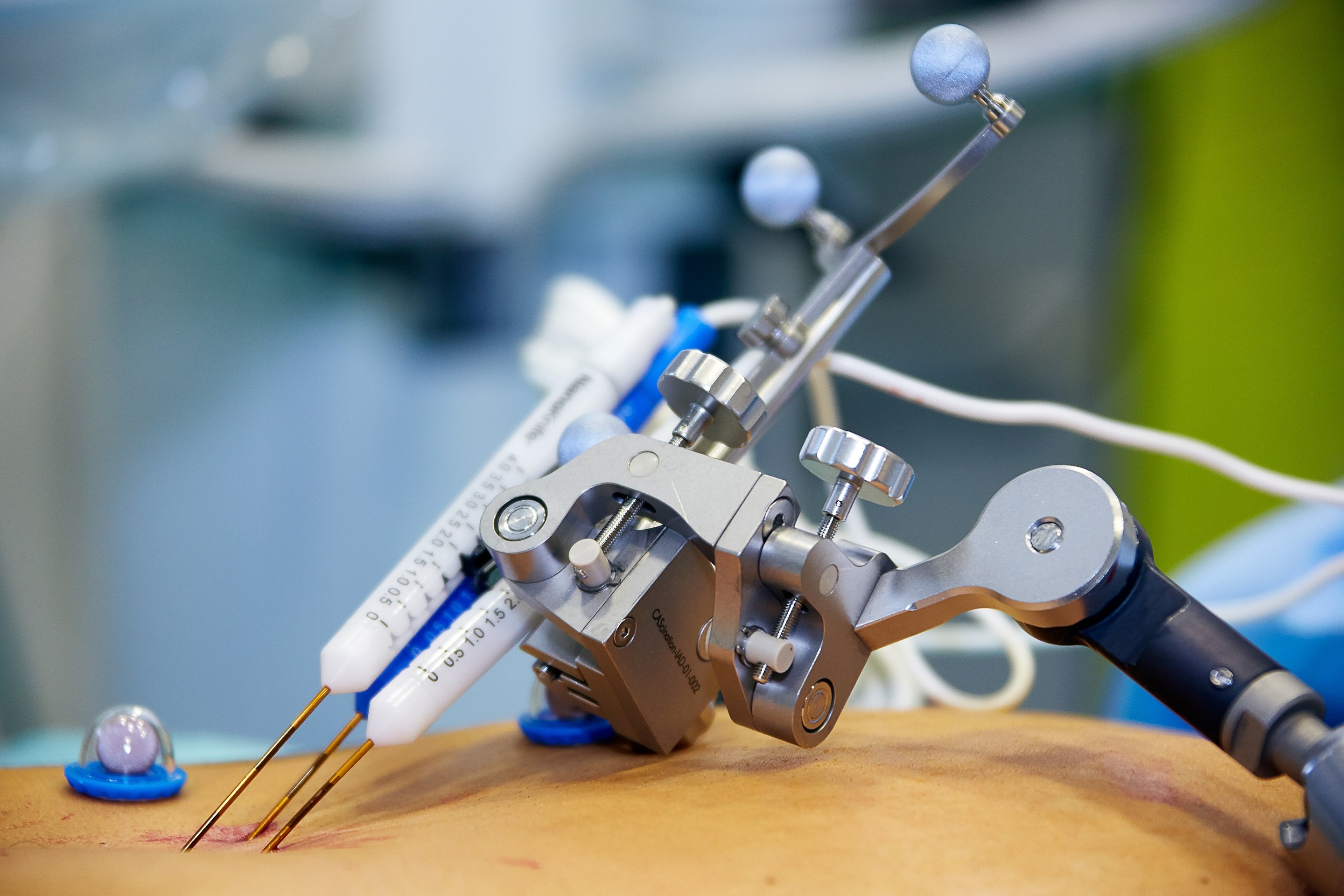Stereotactic IRE of a maglignant liver lesion
SIRE – Stereotactic percutaneous Irreversible Electroporation of a malignant liver lesion using a computer-assisted navigation system

Name: PD Dr. Lukas Beyer
Institution: University Hospital Regensburg, Centre for Radiological Interventional Oncology, Regensburg, Germany
Patient age and sex: 54 years, male
Initial condition:
- Singular inoperable hepatocellurar carcinoma (HCC) in liver segment VIII
- Child-B cirrhosis with portal hypertension
- According to tumor board decision local ablation by means of irreversible electroporation (IRE / NanoKnife, Angiodynamics)
Treatment:
Stereotactic IRE with CAS-One IR
- IRE with 5 electrodes
- Planning of parallel needles at 20mm distance
- Accurate needle placement
- Needle control and measurement of distances between needles using CAS-One IR
- IRE using Nanoknife
Time for treatment
- 23 minutes set-up time for navigation system and planning of needles
- Workflow facilitates efficient intervention
- Measuring tools allow control of accurate distance between all electrodes
- 18 minutes for placement of all 5 needles (one go needle placement)
- No repositioning of needles required

The aiming device allows accurate positioning of multiple electrodes in one go
Conclusion:
The clinical study comparing SIRE to CIRE (conventional IRE) shows a marked reduction of procedure length and high accuracy compared to CIRE (Conventional IRE).
Stereotactic navigation has the potential to reduce radiation dose for the patient without increasing the risk of complications or impaired technical success compared to CIRE.
Due to the high accuracy and focal nonthermal ablation mechanism, SIRE might have the potential to be translated into the treatment of deep-seated tumors in other anatomical regions, e.g., pancreatic cancer.
Learn more about the stereotactic navigation system CAS-One IR.


